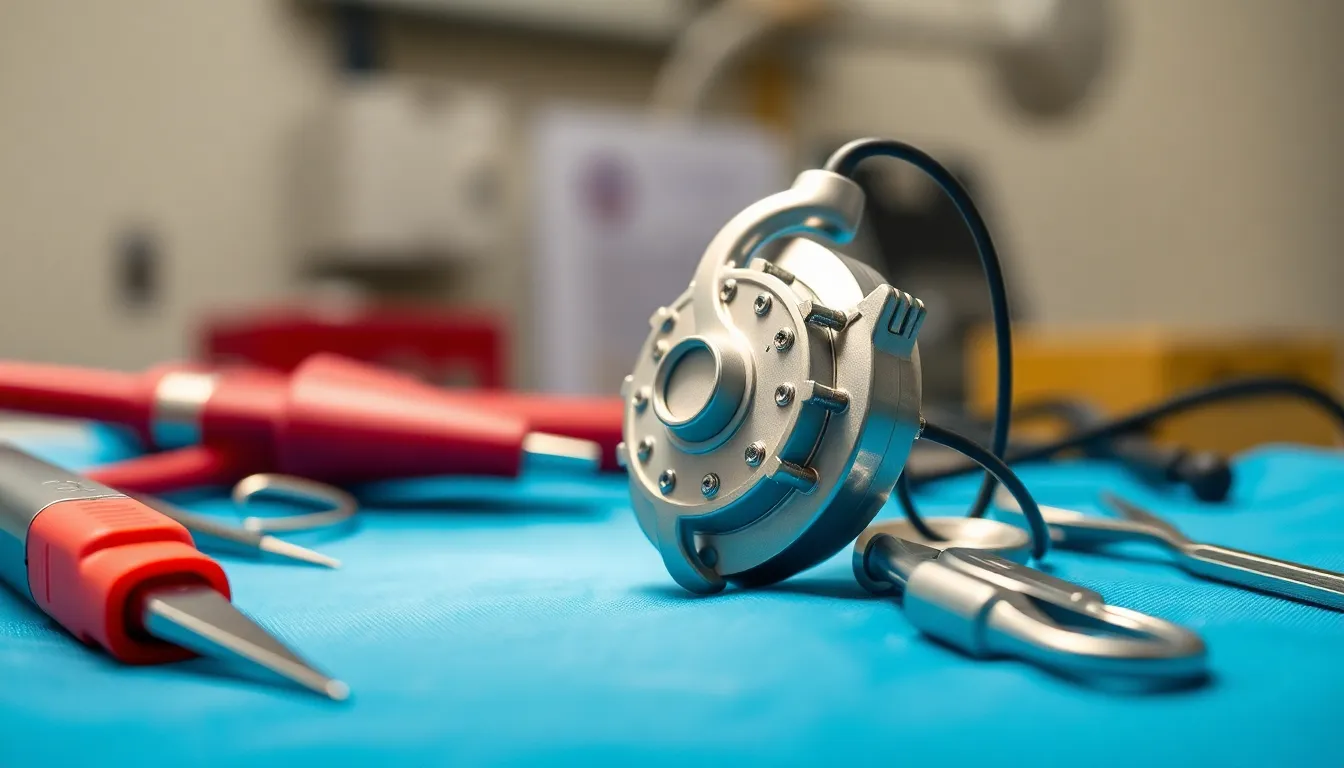The Watchman procedure has become a popular option for those looking to reduce the risk of stroke caused by atrial fibrillation. But amidst the buzz surrounding this innovative treatment, a pressing question lingers: has anyone actually met their untimely end due to this procedure? While it sounds like the plot twist in a medical thriller, understanding the risks involved is crucial for anyone considering this life-altering choice.
Table of Contents
ToggleUnderstanding The Watchman Procedure
The Watchman procedure effectively reduces the risk of blood clots in patients with atrial fibrillation. By capturing these clots, it aims to prevent strokes.
Description of The Procedure
The Watchman procedure involves implanting a small device in the left atrial appendage of the heart. This device, resembling a small parachute, closes off this area to prevent blood clots from escaping. A catheter is inserted into a vein in the leg, allowing access to the heart without open surgery. During the procedure, imaging technology guides the physician to ensure precise placement of the device. Patients typically remain under general anesthesia, minimizing discomfort and anxiety. Successful implantation leads to a closure that reduces stroke risk while patients can maintain regular activities shortly after recovery.
Purpose and Benefits
The primary purpose of the Watchman procedure is to lower the risk of stroke for atrial fibrillation patients. By eliminating the left atrial appendage as a source of clots, the procedure offers an alternative to long-term anticoagulant medications. Key benefits include reduced dependency on blood thinners, which can carry risks such as bleeding. Additionally, studies indicate that patients experience similar or lower rates of stroke compared to those on conventional therapies. The procedure enables many to enjoy improved quality of life with less concern about anticoagulation side effects.
Risks Involved In The Watchman Procedure

Understanding the risks associated with the Watchman procedure is essential for individuals considering this treatment. The potential complications can vary in severity.
Common Complications
Patients undergoing the Watchman procedure might experience common complications, including bleeding, infection, and device-related issues. Bleeding can occur at the catheter insertion site, leading to localized bruising or more significant hemorrhage. Infections can develop around the device or at the access point, requiring prompt medical attention. Additionally, device-related complications, such as device migration or improper placement, may necessitate further interventions.
Rare, But Serious Risks
Some risks, although rare, carry significant consequences. Cardiac perforation can happen during catheter placement, resulting in damage to the heart or surrounding structures. This rare event may require emergency surgery. Another serious risk involves thrombus formation at the device site, which could lead to a stroke despite the procedure’s intention to reduce stroke risk. Lastly, an allergic reaction to medication or the device may occur, posing additional health challenges.
Reports and Studies
Observing clinical data is essential when assessing the safety of the Watchman procedure. Various studies provide insight into outcomes following this intervention.
Overview of Clinical Trials
Numerous clinical trials have examined the Watchman procedure’s effectiveness and safety. The PROTECT AF trial followed 707 patients over 18 months, revealing a stroke rate of 1.9% for those who received the device, comparable to anticoagulant therapies. The trial also indicated a low complication rate, with serious adverse events occurring in less than 6% of participants. Long-term studies continue to evaluate effects, emphasizing the need for ongoing research to confirm these findings. Gathering data from diverse patient populations improves understanding of overall risks, thereby benefiting future patients undergoing this procedure.
Case Studies and Anecdotal Evidence
Reviewing case studies adds perspective to the conversation about the Watchman procedure. In some instances, patients experienced complications such as pericardial effusion or device thrombosis, leading to hospitalization. A select group reported experiencing serious side effects; however, these occurrences remain rare. Anecdotal accounts from patients who successfully underwent the procedure often highlight significant improvements in quality of life. Sharing these diverse experiences contributes to a broader understanding of potential outcomes, allowing prospective patients to make informed decisions based on real-world observations.
Has Anyone Died From The Watchman Procedure?
While the Watchman procedure significantly reduces stroke risk, concerns about its safety persist, including the question of fatalities linked to the procedure. Clinical data provides critical insights into these potential risks.
Analysis of Reported Cases
Reported cases regarding fatalities associated with the Watchman procedure are rare. Data from the PROTECT AF trial indicates that the stroke rate among participants was 1.9%, comparable to anticoagulant therapies. Serious adverse events, including death, occurred in less than 6% of subjects. These statistics suggest that while complications exist, they do not frequently lead to death. An investigation into specific case studies reveals that some patients experience serious complications, though fatalities from the procedure itself are infrequent.
Factors Contributing to Mortality
Several factors may contribute to mortality during or after the Watchman procedure. Pre-existing medical conditions present significant risks. Patients with advanced age, severe heart disease, or prior stroke history face greater challenges. Additionally, procedural complications such as cardiac perforation or significant hemorrhage can increase the likelihood of mortality. Patient adherence to post-procedure care is crucial; non-compliance with follow-up recommendations might result in severe outcomes. Understanding these factors enhances awareness of both the risks and the relative safety of the procedure overall.
The Watchman procedure offers a promising alternative for patients with atrial fibrillation seeking to reduce their stroke risk. While serious complications and fatalities are rare, understanding the associated risks remains essential for anyone considering this treatment. Individual health factors and adherence to post-procedure care significantly influence outcomes. As ongoing research continues to shed light on the procedure’s long-term effects, patients can weigh the benefits against potential risks more effectively. Ultimately, informed decision-making is key to ensuring the best possible results for those contemplating this significant medical intervention.





